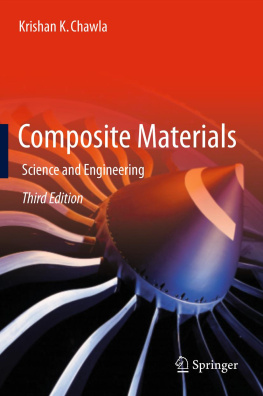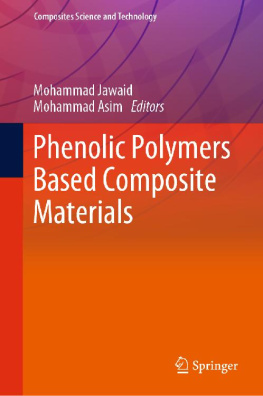Krishan K. Chawla - Composite Materials
Here you can read online Krishan K. Chawla - Composite Materials full text of the book (entire story) in english for free. Download pdf and epub, get meaning, cover and reviews about this ebook. year: 0, publisher: Springer New York, New York, NY, genre: Children. Description of the work, (preface) as well as reviews are available. Best literature library LitArk.com created for fans of good reading and offers a wide selection of genres:
Romance novel
Science fiction
Adventure
Detective
Science
History
Home and family
Prose
Art
Politics
Computer
Non-fiction
Religion
Business
Children
Humor
Choose a favorite category and find really read worthwhile books. Enjoy immersion in the world of imagination, feel the emotions of the characters or learn something new for yourself, make an fascinating discovery.
- Book:Composite Materials
- Author:
- Publisher:Springer New York, New York, NY
- Genre:
- Year:0
- Rating:4 / 5
- Favourites:Add to favourites
- Your mark:
- 80
- 1
- 2
- 3
- 4
- 5
Composite Materials: summary, description and annotation
We offer to read an annotation, description, summary or preface (depends on what the author of the book "Composite Materials" wrote himself). If you haven't found the necessary information about the book — write in the comments, we will try to find it.
Composite Materials — read online for free the complete book (whole text) full work
Below is the text of the book, divided by pages. System saving the place of the last page read, allows you to conveniently read the book "Composite Materials" online for free, without having to search again every time where you left off. Put a bookmark, and you can go to the page where you finished reading at any time.
Font size:
Interval:
Bookmark:
Part I

- It is manufactured (i.e., naturally occurring composites, such as wood, are excluded).
- It consists of two or more physically and/or chemically distinct, suitably arranged or distributed phases with an interface separating them.
- It has characteristics that are not depicted by any of the components in isolation.
- 1.1. Describe the structure and properties of some fiber reinforced composites that occur in nature.
- 1.2. Many ceramic-based composite materials are used in the electronics industry. Describe some of these electroceramic composites.
- 1.3. Describe the use of composite materials in the Voyager airplane that circled the globe for the first time without refueling in flight.
- 1.4. Nail is a fibrous composite. Describe its components, microstructure, and properties.
- 1.5. Discuss the use of composite materials in civilian aircraft, with special attention to Boeing 787 and Airbus A380 aircraft.
Font size:
Interval:
Bookmark:
Similar books «Composite Materials»
Look at similar books to Composite Materials. We have selected literature similar in name and meaning in the hope of providing readers with more options to find new, interesting, not yet read works.
Discussion, reviews of the book Composite Materials and just readers' own opinions. Leave your comments, write what you think about the work, its meaning or the main characters. Specify what exactly you liked and what you didn't like, and why you think so.









